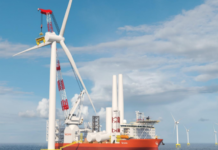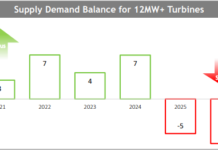On February 26, 2008, a drop in wind generation by about 1400 MW over ten minutes, coupled with an increase in demand of 4412 MW due to colder weather, and lower-than scheduled production from other power suppliers, led ERCOT, the Texas grid operator to cut 1100 MW of power to interruptible customers for about 90 minutes.
Misconceptions
All these facts come from a Reuters article misleadingly titled "Loss of wind causes Texas power grid emergency." I was dismayed a few weeks ago when this misleading reporting led the generally insightful Master Resource Report to conclude "This is a clear example of why solutions to storage and transmission are going to become increasingly critical as sources such as wind and solar become increasing parts of the generation mix. This doesn’t invalidate renewable power; it just means that the country has plenty of work to do and that there are plenty of investment opportunities besides just wind turbines and solar cells." [link to pdf]
It may be surprising to readers that I find anything objectionable in a call for more storage or transmission, although I’m a stronger proponent of transmission, which I consider more cost effective, even if there are far fewer barriers to adding storage.
However, the lesson of the 2008 Texas emergency is that while we need more transmission, and, eventually, storage, there are other, cheaper and easier steps we can take to integrate wind and solar to considerably higher levels of penetration..
Not A "Wind" Emergency
The first thing to note about the incident is that the increase in electric demand was more than three times as large as the decrease in supply from wind. Presumably, ERCOT had been dealing with such fluctuations in demand since long before wind came onto the system. Part of the problem was that other power suppliers (presumably natural gas and coal, usually considered "reliable") were not delivering what they had promised. Hence, the drop in wind production was probably only 20% of the overall problem, not 100%, as the headline led readers to believe.
Hero: The Smart Grid
The next conclusion we can draw is that Demand Response (DR), in the form of interruptible service to large customers, prevented power outages. Demand response an early form of the Smart Grid which is already working today. It allows the grid operator to cut power consumption by other users who have previously agreed to such cuts in return for lower electricity rates or cash payments. According to a 2005 study of DR programs from the American Council for an Energy Efficient Economy, the median cost of DR programs studied was $29 per kWh, and the average cost was $86 which compares quite favorably to the $500 or more per kW cost of a peaking gas turbine. Demand Response was the hero of February 6, 2008, even if wind was not the villain.
Before we look for investments in energy storage or even transmission, we should be looking to even more cost effective resources for the integration of variable energy sources, such as Demand Response and other variations of the Smart Grid. Both EnerNOC (ENOC) and Comverge (COMV) provide demand response services to utilities, and this is also one use for Smart Grid technology from such companies as Echelon (ELON), RuggedCom (RUGGF.PK), Telvent (TLVT), and Itron (ITRI).
Villain: The Dumb Grid
During the discussion at a January 21 seminar sponsored by the National Renewable Energy Laboratory and the National Oceanic and Atmospheric Administration, featuring speakers from wind forecasting companies 3Tier, WindLogics, and AWS Truewind, the speakers mentioned that the weather forecasters had been telling the system operator of the incoming cold front and likely drop in wind production, but that the system operators chose to make no preparations before the fact. Had they done so, they could have ramped up standby generation before the cold front hit, and would not have needed to call on the interruptible power resources.
Given that much of the heating in Texas is electric, system operators must have known that a cold front would raise demand. Why would system operators choose not to heed forecasters’ warnings? There may be many reasons, but in the end, they all probably come back to incentives. Preparing for a predicted increase in demand would have been the intelligent response, but regulated utilities have very little incentive to use their resources intelligently. After all, a regulated utility makes most of its profits based on an authorized return on capital based on the investments it can justify to the regulator as necessary to keep the system up and running. If the utility is, for whatever reason, unable to use those resources effectively, it becomes easier to argue that more resources are needed, which will lead to more profit for utility shareholders, and a less stressful job for system operators..
In other words, regulated utilities have an incentive to use as little brainpower (for which they do not earn a return on capital) and as much capital investment as possible. They have an incentive to be dumb. Given such incentives, is it any surprise that they ignore warnings, and then blame the problem on the variability of wind?
Tom Konrad, Ph.D.
DISCLOSURE: Tom Konrad owns ENOC, COMV, ELON, RUGGF, and ITRI
DISCLAIMER: The information and trades provided here and in the comments are for informational purposes only and are not a solicitation to buy or sell any of these securities. Investing involves substantial risk and you should evaluate your own risk levels before you make any investment. Past results are not an indication of future performance. Please take the time to read the full disclaimer here.









Too bad ERCOT ISO is deregulated thus, in this case, making your comments about regulated utilities moot.
This is a wonderful blog that I have read for a long time. This is the least impressive post ever. C’mon! You’re better than this. From the fuel purchasing side of the business, a utility’s decisions have to be prudent…they have a prudence issue that we have to pass at public service commissions. If they don’t pass, the commissions would disallow fuel cost recovery. There is no incentive to be dumb. Just the opposite.
Looks like I ruffled a lot of feathers with my thoughts about the dumb grid.
JK is right, I should not have attributed it to regulation in this case…
I stand by the evidence is there that grid operators are not using all available information… as to why, I’ll have to come up with a new theory.
Don’t Bet on a Big Rally for Alt Energy Stocks This Year
Charles Morand ( AltEnergyStocks ) submits: Last week, Jefferies & Co. held its Global Clean Technology
JK’s remark “ERCOT ISO is deregulated” is inexact. ERCOT is a nonprofit company “subject to oversight by the Public Utility Commission of Texas and the Texas Legislature” according to the ERCOT website.
ERCOT manages the transmission assets of many utilities in Texas. The transmission (and local distribution) assets owned by the utilities remain regulated by the PUC of Texas.
In the case of this episode, however, it isn’t regulation per se that is the problem, but rather the operating rules the ERCOT worked with. At the time ERCOT in essence relied upon day ahead forecasts and didn’t update the wind power forecast after the day ahead schedules were submitted. The operating practices have been changed to better use forecast information.
(And, note that the ERCOT event date was February 26, 2008, not February 6 as you have it in the introductory paragraph; the drop off in wind power occurred over three hours, not 10 minutes.)
Thanks for the clarifications, Mike. I fixed the date typo.
To other readers: Mike’s blog, Knowledge Problem is excellent and worth a read.
It’s good to hear the ERCOT has updated their procedures. However, I don’t think that there is any contradiction between poor proceedures and poor incentives. It’s incentives, after all, which lead us to put strong procedures in place.
In a sense, doesn’t the ERCOT episode–plus the 2003 blackout–cause you to pause when advocating a truly nationwide grid that transports kWh across wider swaths of land (i.e., from solar resources out west to demand centers in the south)?
We would be increasing our reliance on transmission staff to do their jobs perfectly, when the evidence seems to indicate that’s a bad bet.
Bill,
It’s a good question. My solution is not to give up on grid operators, but to give them the incentives, tools, and protocols to do their job properly.
Also, a national grid does not need to be designed so as to transfer instability, as it does now. That is a product of AC transmission. One advantage of HVDC is that it tend to stabilize the grid rather than destabilize it. So, we can keep our current control regions, and connect them with robust HVDC lines to transfer bulk power.